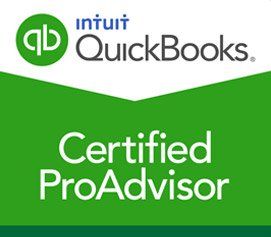Section 199A Reduction Methods
Section 199A was created to help manufacturers or businesses who have a product development expense offset their overhead and maintain the growth of their business. It allows businesses to deduct some percentage of their net income from selling their products and services.
Let's get to know everything about Section 199A.

Section 199A Reduction
Section 199A of the U.S. Internal Revenue Code, enacted in 2017, created a special tax deduction for certain businesses and individuals. By providing a tax break for companies, this act encouraged investment in research and development.
The law is intended to encourage investment in R&D by allowing companies to deduct up to 20% of their qualified expenses from taxable income. Qualified research expenses include expenditures for acquiring or improving tangible property used in conducting qualified R&D activities.
Additionally, costs associated with an employee's performance of qualifying R&D activities are eligible for deduction if such activities are performed on behalf of a company at an office or plant located within the United States or any possession thereof during the taxable year.
Some Benefits of Section 199A Reduction Methods
Section 199A deduction is a tax credit that reduces the tax you have to pay on your income or net profit. The credit amount depends on how long you have owned the business or income, but it can be up to 20% of that passive income. You get this credit if you own an interest in a qualified business or investment property that meets certain requirements.
Following are some benefits that you can enjoy with Section 199A tax reduction.
Harvest Capital Losses
Section 199A allows certain taxpayers to use capital losses sustained in earlier years to offset gains from other investments they have made during those years. This is called harvesting a capital loss.
If you have a stock portfolio with losses from previous years, you may want to consider harvesting them against gains from later investments. This strategy can help you lower your tax bill and increase the money available for retirement savings, home ownership, and other purposes.
Harvesting capital losses is a great way to reduce the tax you owe and increase your tax refund. It can be done in a few different ways, but one of the most common is to sell an investment within 2 years of being sold at a loss and then claim a deduction for all the remaining basis.
It is a safe way to invest. Whether starting a business or investing in one already established, harvesting capital losses can help to keep more of your money in your pocket.
Make Charitable Contributions
Section 199A allows you to make charitable contributions. When you deduct an itemized deduction for charitable contributions on your tax returns, you can claim an additional deduction for the fair market value of the donated property. This is called a qualified charitable contribution deduction, and is worth up to some percentage of your adjusted gross income (AGI).
If you are interested in making charitable contributions, you must check all of your available options. Some organizations offer their donors a 100% match on their donations. Others offer scholarships or grants in exchange for donations.
If you choose to make charitable contributions with this method, there are a few things to keep in mind:
First, you must itemize your deductions to take advantage of this law.
You also cannot claim a deduction for any capital gains made when making these contributions. But if you sell an asset after contributing, any capital gains accrued at that time will still be deductible.
If you are already into making charities and helping NGOs bear their expenses, you can take full benefit of Section 199A. For this, you should consult a professional tax advisor.
Book a Free 1 Hour Consulting Session with Yoke Tax.
Buy Business Assets
The Section 199A deduction is also a great way to buy business assets because it allows for the deductibility of all capital expenses incurred in acquiring such assets. This includes costs associated with hiring consultants, attorneys, accountants, engineers, and architects, and the list goes on.
For example, if you want to buy your business's main asset, its building, you will be able to deduct all of your costs associated with the purchase from your income taxes. Even if you don't use those funds for anything else, you can still claim them as deductions on your taxes.
This is an especially helpful tax break if you want to buy a building that is in disrepair or is dilapidated. You may be able to get it at a much lower price than what similar buildings would sell for, and those savings will help pay off some of your loans.
Section 199A is available to any business that meets all of the following criteria:
The business must be organized as a corporation or partnership.- The business must have gross receipts of at least a million from all sources during the tax year.
- The business must not be engaged in the trade or business of making a sale or exchange.
Conclusion
This is how you can reduce your taxes while taking benefits from IRS Section 199A. The tax reduction methods written above are great for saving money for retirement.
If you want to take full advantage of Section 199A's reduction methods, you should consult a professional tax advisor. Set up a
free one hour consultation today.



